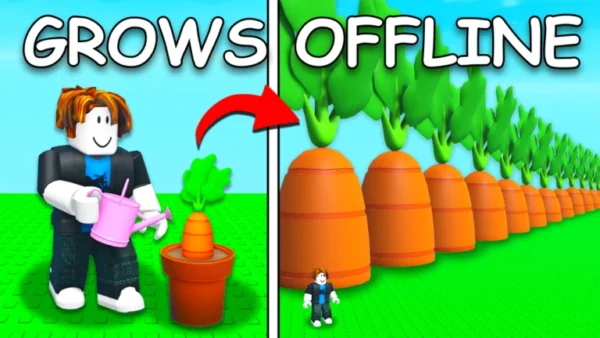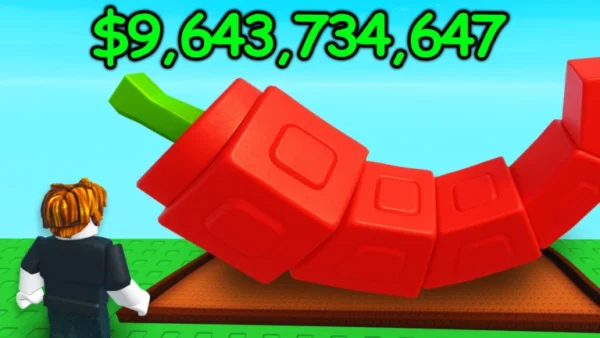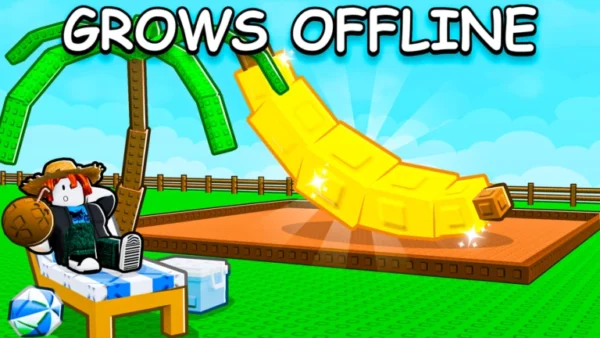Popular Now
Introduction
While Roblox: Grow a Garden begins as a relaxing farming simulator, players who push into the late game face a different kind of challenge: how to scale efficiently without losing the sense of control. This article explores the tension between automation (like auto-harvesters, auto-irrigation, and NPC workers) and player agency (manual planting, design freedom, and in-game decision-making). As players unlock more tools to make gardening easier, they may unintentionally reduce their own role in the game, risking disengagement. Let's examine this design dilemma across ten developmental phases.
1. Unlocking Basic Automation: A Double-Edged Milestone
The first automation tool many players encounter is the auto-harvester, available after reaching a mid-tier garden level.
Immediate Relief
The auto-harvester removes the need to click each crop manually, which is a huge time-saver when plots expand.
Loss of Interactivity
However, it also removes the player’s active role in harvesting, creating a passive experience.
Pros and Cons:
-
✅ Frees time for other tasks
-
❌ Reduces satisfaction of completing chores

2. The Irrigation System: Water Without Engagement
Irrigation upgrades allow players to install sprinklers that water crops at timed intervals. These require coins, energy, and specific placements.
Overcoming Scarcity
For many, this upgrade is a solution to earlier water scarcity problems.
Design Constraints
Players are limited in where they can place sprinklers, reducing layout creativity.
Effects:
-
Automation feels like a reward
-
But layout freedom is sacrificed for function
3. Hiring NPC Gardeners: Delegating Everything?
NPC workers can be hired to plant, harvest, and fertilize. While this can optimize efficiency, it raises questions about the player's purpose.
Optimal vs. Enjoyable
Some players maximize profit with 100% NPC efficiency, but report feeling "disconnected" from the game.
Inactive Gameplay
Once hired, NPCs make the player more of a manager than a gardener.
Potential Issues:
-
Less personal satisfaction
-
Risk of turning gameplay into idle simulator
4. Automation vs. Decoration: Creative Freedom Shrinking
Advanced players often want to build unique garden layouts. However, automated systems (like conveyor belts, compost pipelines, and seed silos) must follow strict design templates.
Form vs. Function
Aesthetic arrangements often conflict with efficient automation layouts.
Creativity Penalties
Players are penalized for beautifying instead of optimizing.
Common Complaints:
-
“My garden looks great but earns less.”
-
“I had to remove decorations to fit systems.”

5. Tech Tree Progression: Automation First, Strategy Later
The in-game tech tree heavily favors unlocking automated features before offering strategic alternatives (like multi-season crop rotation or weather prediction tools).
Unbalanced Prioritization
Instead of encouraging thoughtful planning, the game pushes players toward automation as the primary path to success.
Missed Opportunities
Advanced strategy systems are underdeveloped compared to automation tiers.
Consequences:
-
Less focus on learning systems
-
More focus on acquiring systems
6. Automation-Induced Economic Inflation
When large-scale automation is implemented, the in-game economy suffers. Players flood the market with high-yield crops, reducing overall value.
Oversupply Crisis
Rare crops become common, causing price drops and making farming less profitable.
Market Instability
Manual players can't compete in value with automated players.
Outcomes:
-
Economy feels broken
-
Veteran players dominate earnings
7. Passive Progression and the Role of Time
With full automation, some players log in just to collect profits, transforming the game into a "set-and-wait" simulator.
Idle Game Creep
What started as an interactive sim turns into idle-style gameplay with minimal decision-making.
Retention Risk
Players lose interest once they realize the game plays itself.
Side Effect:
-
Daily logins drop
-
Decrease in long-term engagement

8. Player Burnout From System Management
Ironically, too much automation introduces micromanagement fatigue—especially when machines break down, need energy, or require upgrades.
Tech Maintenance Hell
Players spend more time fixing systems than gardening.
Stress Replaces Joy
Instead of relaxing, automation becomes a chore.
Common Player Experiences:
-
“I didn’t sign up to run a factory.”
-
“Gardening now feels like work.”
9. Automation Disrupts Multiplayer Balance
In co-op or PvP gardens, automated tools give unfair advantages. Players without full systems struggle to keep up or contribute equally.
Power Gap
Teams with unequal tech access create friction among players.
Loss of Teamwork
Automation isolates players in their own min-maxed systems.
Multiplayer Fallout:
-
Disbanded groups
-
Competitive imbalance
10. Redesigning the Endgame: Bringing Back Meaningful Interaction
The core problem is not automation itself—but its overreach. The solution lies in reintroducing meaningful choices, even at high levels.
Suggestions for Balance:
-
Allow limited automation but reward manual care with bonuses (e.g., rare crop mutations)
-
Introduce interactive seasonal events requiring hands-on gameplay
-
Add customizable NPC behaviors based on player commands, not AI defaults
Restore Player Role
Players should feel like garden designers and caretakers—not just managers of machines.
Conclusion
Automation in Grow a Garden solves key early- and mid-game frustrations but creates a cascade of late-game challenges. While it allows scalability and reduces repetitive labor, it also sidelines player agency, creativity, and meaningful decision-making. By rebalancing automation with strategic and aesthetic gameplay, developers could create a richer, more rewarding experience for long-term players.


















